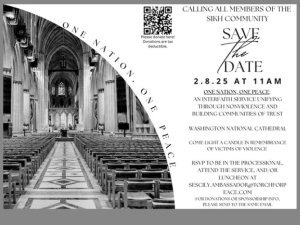If memory serves me well, I began to read around the age of 3. When I walked into kindergarten at age 5, and the teacher began to teach us the ABC's, I complained: I told her I already knew the ABC's, that I already knew how to read.
I couldn’t understand how
the children around me did not know what an “A” was. Wasn’t
there something else I could do?
The teacher had no idea
what to do with me.
It was, unfortunately, the beginning
of a theme in my life. The incredulous sense of, “Really? They
don’t know that?”
My sister once teased me. “Why
are you such an intellectual snob?” she asked.
I teased her
back, “Because I can be.”
Actually, what learning to read
at age 3 meant was that my brain has a special affinity for language
- for words, images and stories. How they shape people and how, in
turn, they affect life.
There are other skills that I am
woefully deficient in, of course. Having a sense of direction is one
of them.
While in college, I majored in Asian Studies but also
took a lot of classes in English Literature. Part of our college
discipline was to learn about literary theory – the study of how
stories encode hidden meanings within them. The values of a society,
the power structures, the oppression, even, exist in the subtext of
the stories that we tell each other.
For instance, “Eve
made Adam eat the apple. God got mad about it. And that is why women
are inferior to men.” Really – it’s a ridiculous statement on
every single level. But it is such a deeply rooted story that the
people who have made this story a part of themselves have used it to
justify gender inequality for thousands of years.
Studying
literary theory gave me the tools to not get caught in the story,
itself, but to see all the layers of hidden meaning underneath. It
turned my understanding of stories inside out and upside down.
It
wasn’t that stories tell you “how life is.” No – quite the
opposite. The human brain acts and projects from the stories most
deeply ingrained within it.
This study of literary theory
opened a doorway in my awareness I realized something very simple: if
you want to create change in the world – in society, in families –
start by changing the stories. The stories that get told. The stories
that get heard. The stories that become a part of someone.
If
the stories change, the mind can create something new.
After
graduating from college, my pursuit of “the story” continued. I
worked for a while as a journalist. During that time, I tried my hand
at investigative reporting.
One story that I wrote
exposed corruption in the courts of Harris County, Texas, and none of
the judges discussed in the story got re-elected. However, the story
took six months of research and I got paid $400 for it.
Not
exactly a way to earn a living.
In my mid 20s, for a
very brief period of time, I tried to begin a monthly newspaper with
my then partner. The theme of the newspaper was “solution-oriented
news.” The intention was to never write about anything from a
negative perspective, and also not to simply feature fluffy, happy
stories. “Solution-oriented news” meant tackling real issues from
the perspective of how to solve real problems.
The name of the
monthly newspaper was ‘Spiral Magazine‘. Before I began it, I did
some research about running a monthly paper. One person told me that
I needed tens of thousands of dollars of capital to be
successful.
He was right. The newspaper lasted just a
few months. It bit the dust when I realized how much advertising
influences editorial policy. While trying to sell an ad to a wellness
center, the manager basically said, “We will purchase an ad if you
write something positive about us.”
That was when I realized
the basic problem with the free press.
It isn’t actually
free.
When ‘Spiral Magazine’ folded, I had no real clue
about what to do with my life. Around that time, I came to Espanola,
New Mexico and took a Kundalini Yoga Teacher Training course with
Kundalini Yoga Master, ‘Yogi Bhajan’ Harbhajan Singh ji.
You
have to understand, back then, I was living a very different kind of
life. I wore black all the time. I did not own a bra or a watch. I
was a rebel with too many causes. Free spirited, intellectual, seeker
- studying lots of different meditation styles.
The
Kundalini Yoga Teacher Training program lasted for a month. That time
in my life is a story in itself. But the seeds planted during that
training program sprouted into profound changes in the years that
followed.
There was one particular moment I remember,
however. While doing Kundalini Yoga Teacher Training in Espanola, we
aspiring yoga teachers had a chance to tour the ashram’s gurdwara
and hear a little bit about the Sikh Gurus. We were taught how to
cover our heads, where to sit to listen to the kirtan, and to never
come empty-handed before Guru Granth Sahib.
Now – I
did not have much at that point in my life. My mother had helped pay
for my trip to Espanola to begin with. But there was one quiet
afternoon when I came to the gurdwara by myself. I had copies of the
two issues of ‘Spiral Magazine’ that we actually published.
I
put those newspapers in front of the Guru Granth Sahib and bowed.
There was a prayer there – but it didn’t really have any words.
‘Spiral Magazine’ had been the culmination of all my study and
intellectual activism up to that point in my life. I really wanted to
make that dream a reality - to create the new story that would create
a different world. But because of the practical business realities,
it hadn’t worked out.
So I put the two copies of these
newspapers in front of the Guru because it was honestly all I had to
give.
And I walked away.
That was almost 20 years
ago.
This month, amazingly, the pursuit of the story blossomed
once again in a way that has helped me feel a sense of satisfaction
rather than a sense of defeat.
At the beginning of
March, in celebration of International Women’s Day, SikhNet
released a free online animation titled “Kaur”.
“Kaur”
weaves two stories together. The story of a young Sikh girl, Saibhang
Kaur, who has an interest in science. She feels bullied at school and
misunderstood at home. And the story of Mai Bhago with her courage in
leading 40 men into battle to protect Guru Gobind Singh against the
Mughal forces.
In the animation, Saibhang Kaur’s
grandmother tells her the story of Mai Bhago. And because of this
story, Saibhang Kaur finds the courage to pursue her dreams.
We
hoped that the story would inspire young girls and boys. We hoped
that Sikh parents would enjoy it. But we also created the story in a
way that it might potentially appeal to any girl, to any boy, to any
family.
Because the story of Mai Bhago is one
of those stories. If it gets in you, it changes the way you
see the world. It changes the way you think, and what the mind
believes is possible.
The response to “Kaur” has been all
that we hoped, and more. Children love it. They are getting imprinted
early on with a powerful story that teaches gender equality and
self-empowerment. Sikh parents have thanked us for it – they are
watching the movie with their children and having dialogues with them
about the issues. And people who are not Sikh enjoy it, too.
Here
are a few of the comments we have gotten:
“Thanks a lot for
making this kind of movie for us. I regard and love my religion a
lot. It was really so inspiring.”
“Great Job! We watched
the film together as a family this evening. Much enjoyed by all. Nice
story, well put together, and a fun animation style. Left us wishing
for more stories like this. Thank you for your time and efforts to
share with us.”
“Superb. You did an excellent job. I
thoroughly enjoyed this. I am a Christian, but I have shared it in my
FB. God bless.”
The response to “Kaur” reminded me that
my life has been a continual exploration of how the new story can
create a new reality. It sealed in me the understanding that the Ten
Sikh Masters deeply understood this phenomenon.
Gurbani
brought a new song to the earth hundreds of years ago that profoundly
challenged the status quo.
The more people sang those
songs, the more society began to change.
Stories like Mai
Bhago show how deep that transformation went. From a culture that
considered women inferior to even animals, a woman like her could
arise: self-illumined, meditative, martially trained, and a leader.
Her actions fulfilled the promise that gurbani offers. Those songs
gave birth to Mai Bhago – to her consciousness, her valor and
courage.
And the actions of her life wrote a new story
that has resonated through the centuries.
We forget sometimes
that the Sikh tradition never started off as something separate.
Rather, the Gurus gave a path that could elevate the entire human
race to Universal Consciousness. Gurbani does not belong to us Sikhs.
We protect it as Sikhs. But the songs and their wisdom belong to the
world.
Many stories in Sikh history show how people
realized their full potential as human beings. They are not just
“Sikh” stories. They are stories of hope for all humanity. The
more we can find ways to share these songs and stories with others in
a way that is relevant to them, the more power we have to create a
new reality.
That, ultimately, is what I believe the
Gurus are about.
You have to become the living story of the
change you want to see in the world.
Please CLICK here
to watch the animated film, "Kaur".





